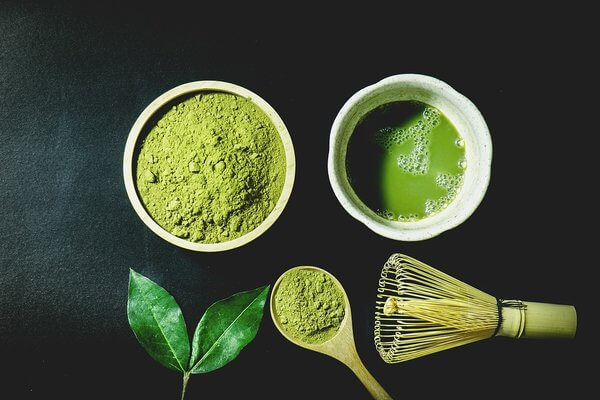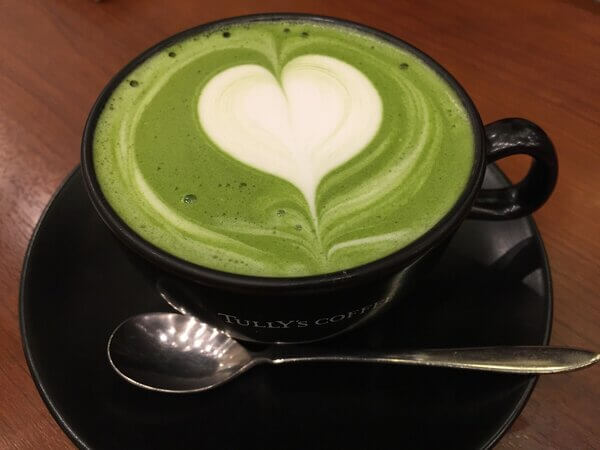In this article, we will know the different grades of Matcha. It is native to Japan and this tea has been cultivated there for centuries. It is available as a green-colored powder.

Matcha tea leaves are processed carefully so that their taste and nutrients are not lost. But, matcha is not just one type of tea. In fact, there are many different grades of matcha available that have a distinct flavor, color, and health benefits.
Before knowing the different grades of matcha, it is important to know whether Matcha¹ is green tea or not? So, let’s find out…
Is Matcha Green Tea?
Matcha is a type of green tea but it is not the same one that you generally find in a store labeled as “Green Tea“.
Basically, matcha has a completely different style of cultivation and production than regular green tea. Due to this different style, the flavor, nutrients, aroma, consumption, and form everything about matcha is different.
Regular green tea is grown in many countries, but matcha is exclusively grown in Japan. However, recently many countries have started cultivating it but the original and highest quality is still the Japanese one.
To grow Matcha, the most important thing is to harvest it in shade. Lack of sunlight helps to retain its nutrients like chlorophyll.
Due to the presence of more chlorophyll, matcha gets a rich and vibrant green color. In addition, it also gives a delicious flavor that helps in boosting your energy levels.
In the process of manufacturing green tea, it is crushed with air pressure. This is called the pre-cooking. So, when you finally prepare green tea, you get a yellowish-brown color.
As far as Matcha is concerned, it is ground to a fine powder in a very slow process. In this unique grinder, only 40 gms of matcha powder can be prepared in an hour.
This slow process of forming the powder helps to reduce friction. When there is less friction, the nutrients in the matcha powder are preserved.
In addition, Matcha has a little sweet and smooth flavor in comparison to green tea that has a very flat and bland flavor.
However, both matcha and green tea have caffeine in them. The level of this caffeine depends on the quality of the product and the preparation technique. You can find out more about the matcha green tea caffeine in detail to know which is better for your health.
What should you look for in Matcha?
When choosing between the different grades of matcha, there are a few important things that you should keep in mind. These include:
- If the tea has a vibrant green color then it usually means that it is pure.
- If the powder has a fine texture and density then it usually has a delicate flavor.
- The quality and the brand of the product.
- Manufacturing and production quality.
- Exposure to oxygen while packaging.
- Grinding and treatment before processing.
- Extra ingredients added to it.
Let’s discuss all the different grades of matcha in detail so that you can easily choose the most appropriate one for yourself.
Different Grades of Matcha
There are two different grades of matcha:
- Ceremonial Grade
- Culinary Grade
There are five types of culinary grade available – premium, café, classic, ingredient, and kitchen.

Now, let’s take a look at all these different grades of matcha in detail…
Ceremonial Grade
The highest quality of matcha powder in the world is the Ceremonial grade. It is a luxury tea. The traditional Japanese tea ceremonies are incomplete without this tea.
The youngest leaves of matcha contain the maximum flavor. It is important to remove the veins and the stems of the plant because they are not useful. In fact, this is that part of the plant that contains the most nutrients and flavor.
To preserve the freshness of the leaves, they are ground to a fine powder using a stone grinder. This texture helps in generating a very delicate taste.
When comparing its flavor with other tea grades, the Ceremonial grade has a mildly sweet flavor. This is a very high-quality delicate flavor.
The Ceremonial grade has a good taste so it can be served without adding any ingredients to it. The reason is that when you add milk, sugar, or other ingredients, the original flavor changes.
You can prepare this matcha by adding hot water to it.
It is not ideal for cooking or baking because it is a high-quality tea that is very expensive.
With the Ceremonial matcha, you can create a thick tea blend that has a fresh and glassy aroma.
To prepare 1 cup of tea you need only 1/2 teaspoon of matcha powder. Just whisk it in hot water until no lumps remain and you get a smooth consistency.
Culinary Grade
Both Culinary grade and Ceremonial grade are of the same quality. It’s not like one is better than the other.
The difference is in the flavor. The Culinary grade is more bitter and robust.
The bitterness of this grade is good for preparing smoothies, lattes, and bakery products. Even while cooking, its bright green color or strong flavor doesn’t alter. This is the reason why it’s so distinctive.
Culinary grade matcha is available in five different types. The process of producing and harvesting these types is different from one another. Therefore, it is a very unique blend of Matcha.
Premium Grade
The Premium grade is one of the most delicious types of matcha. This is the reason why it is so popular.
It is highly nutritious and so many people use it to boost their energy levels.
It has a fine texture so it is easy to mix in water. Also, the color is bright green so it looks more appetizing.
If you compare its price with the Ceremonial grade than, it is a lot cheaper.

Café Grade
The leaves of Café grade are less delicate in comparison to the Premium grade. Also, its flavor is a little bit stronger.
Many cafés use this as an ingredient to make coffee, lattes, and smoothies.
It’s dark green color and strong flavor remains unchanged under high temperature. This makes the tea an ideal ingredient for baking and cooking.
It is generally available in high-end cafés because it is slightly expensive.
Classic Grade
The classic grade is high-quality matcha that has a bright color. Its texture is very fine in comparison to other grades.
Both Premium grade and Café grade are more expensive than the Classic grade. So, it is a more economical option.
As far as the flavor is concerned, it is strong and bitter but it is very creamy. The majority of matcha drinkers prefer this one due to its flavor.
Ingredient Grade
The Ingredient grade is a type of matcha that can be used for preparing many recipes. Its consistency is thicker than the Classic grade and Café grade.
Ingredient grade has a thicker consistency, so it is ideal for making smoothies, coffee blends, lattes, and other beverages. Also, you can use it for preparing desserts, cookies, sauces, and more.
However, it is important to use a matcha whisk so that the consistency remains smooth, otherwise, it has a tendency of forming lumps.
Kitchen Grade
Kitchen grade has a lot of similarities in comparison to ingredient grade. Its leaves are delicate and its consistency is thicker than other matcha types.
The texture helps in bringing out the astringent flavor more. This flavor is due to the presence of theanine in matcha leaves.
Also, it has a lingering flavor that makes it perfect for large-scale production of matcha food items. You can easily find this same type of matcha in grocery stores. It has a slightly darker color which makes baked foods more appetizing.
Different Grades of Matcha – Conclusion
All these different grades of matcha have health benefits. Matcha is a good source of antioxidants and nutrients.
Basically, the methods of drinking or consuming differ according to the grade. This means there are some grades that do not lose their flavor while cooking or baking but other grades might not taste as good after cooking.